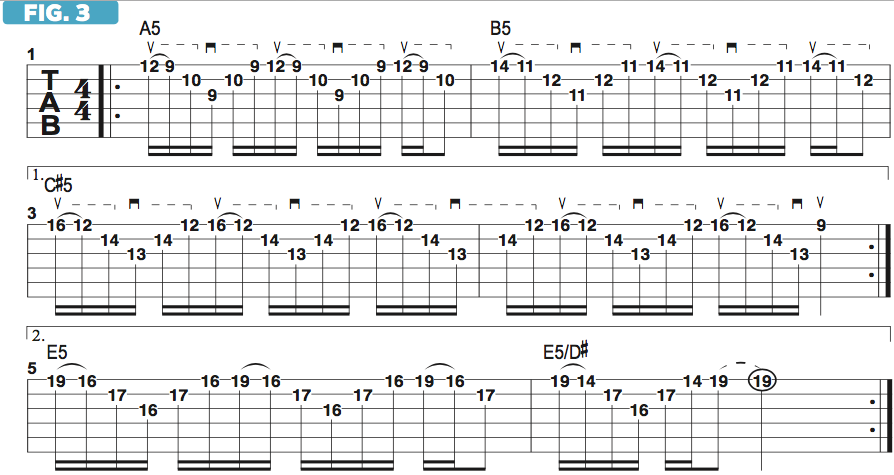Nita Strauss shows you how to sweep pick on guitar
The Alice Cooper guitarist shares a primer on the essential shred technique

One of the most requested topics people have asked me to teach is sweep picking, a technique used most often to perform fast ascending and descending arpeggio-based runs. It’s called “sweep” picking because the pick is swept, or dragged (or raked), across two or more adjacent strings in a single downstroke or upstroke.
A great way to begin working on sweep picking is to focus on sweeping across just the top three strings. The key is to use a light touch with your pick hand; you don’t want to apply more pressure than necessary to drag the pick across the strings, as that may result in a noisy, unappealing sound.
“Let the pick roll” is an accurate description of how the sweeping technique should feel. Also, strive for an effortless feeling without concentrating too much on each individual note in the arpeggio.
Following the demonstration of the G major and G minor sweep arpeggios on the top three strings, I move the pattern up a forth to C major, as shown in bar 1 of FIGURE 1.
Using a rhythm of eighth-note triplets, I begin on beat one with an upstroke on the high G note and then pull off to E, followed by another upstroke on C, second string, 13th fret. On beat two, I initiate the downstroke sweep on the G string at the 12th fret and drag the pick across the top three strings to sound G, C and E. Beats three and four repeat beats one and two, with the exception of the final note, where I switch to a D.
In bar 2, I reference a Gsus4 chord via a sweep pattern with the notes G, D and C, followed by G, C, D. Sweep across two shapes repeatedly until it sounds smooth and effortless.
Now let’s expand the idea to include other chord shapes. In FIGURE 2, bars 1 and 2 are the same as FIGURE 1, but in bar 3 I move the shapes progressively lower, starting on Am, followed by G and F. The figure wraps up with an ascent back up through G and Am, culminating with a high A note.
All the latest guitar news, interviews, lessons, reviews, deals and more, direct to your inbox!

The best way to practice your sweeps is to play them over a chord progression. In FIGURE 3, I’m playing over a progression that goes A5 B5 C#5 A5 B5 E5 E5/D#, which is repeated and then played in reverse, ending on a Gs major chord. All of the sweep-picked arpeggios follow the chord progression exactly, essentially using the identical major triadic shapes for each pattern. These arpeggios are played in a rhythm of even 16th notes.


Mastering sweep picking takes dedication and diligence, so work through these examples carefully and slowly at first, gradually building up speed while striving for graceful and seemingly effortless fluidity.
